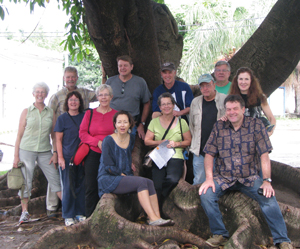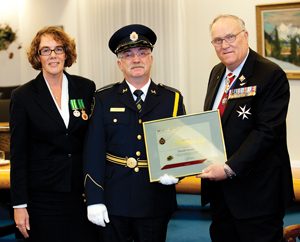
A Drumheller couple has found a way to see far off places, and make a difference for families around the world.
In fact they are making a habit if it.
Just before Christmas Bob and Norah Hamilton completed their work on a Habitat for Humanity project in Argentina.
This was their third time volunteering for the charity, which helps provide housing for those in need by assisting families in building their own homes, and realize the pride of ownership.
Three years ago the couple headed to India on their first project. Bob, a carpenter by trade and journeyman cabinet maker, said while this was their most challenging experience, they were undeterred, and the very next year they were off to Thailand.
This year they worked on four homes in Santa Fe on the outskirts of Buenos Aires.
“I get more than I give, by a long shot,” said Bob. “There are a couple things that attracted me about Habitat, one of the thing is you are involved with the people you are helping, it is not as if you are writing a cheque. You form a real bond with them, and the other people that are involved on the build, and they are from all over Canada. You learn about other cultures, you are involved with other cultures, and you are very much accepted by the host country.”
Norah is also hooked.
“We have had the opportunity to work in India, Thailand, Argentina and Mexico, and each experience has been unique and particularly fulfilling,” she said.
Bob said the build is usually eight days, and then there are a couple cultural days where they are able to learn more about the host country. Norah adds they assisted a private school in the area with maintenance while in Argentina.
The project involved four houses in different stages of progress. One was starting with the foundation, one was nearly complete. Another was an existing house, where the family had grown and they were working on the addition. While Bob went over with the skill set of a carpenter, he said it was inconsequential, he was there for the labour. In fact one of the major projects he worked on was digging the cistern for the sewer system - this was a pit, about 16 feet deep, all dug by hand.
“It’s hot and hard work, it’s not a piece of cake,” chuckles Bob, adding that individual volunteers work at the pace they are capable.
The construction techniques were very different than ones he is used to. Most of the house is built from mason work with hand made bricks and cement mixed by hand right on the ground, transported in buckets.
“Interestingly enough the construction process is quite similar in those three countries, much different than Canada, but quite similar to each other. They are all hot countries, all use mason work,” said Bob. “It is all volunteer, so the labour doesn’t cost anything.”
Norah adds that the age range is anywhere from 19-65.
“This particular build to Argentina ended up with everyone 54 plus. The average age was 59,” said Norah. “Even so, we outstripped every preceding team in our ability to get the jobs completed on schedule. A whole load of A type personalities was the cause.”
While three years of this type of work seems like a lot, they are undeterred.
“We’ll go every year. If I get some time, I might go twice a year,” Bob said.
They have not decided where they will be going next year, but he is interested in going to Africa.
He believes in Habitat for Humanity.
“There are a lot of success stories. They have to pay for one-third of their own house, and they have to work on it… they were so excited to get their house,” said Bob.
He recommends South America as a good destination for someone wanting to participate in a Habitat project for the first time.
More information is available at www.habitat.ca
























